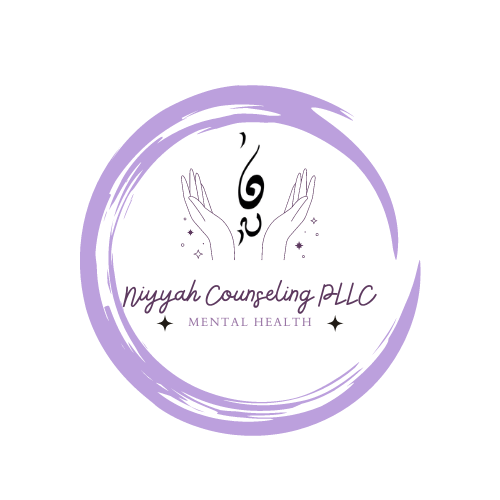Overwhelmed or Addicted? Understanding the Role of Digital Overload in Modern Life
Overwhelmed or Addicted? Understanding the Role of Digital Overload in Modern Life
The world is more connected than ever before. We can access breaking news, stream entertainment, and stay in constant communication with friends and family—all at the touch of a button. But with this incredible convenience comes a cost: many of us feel perpetually overwhelmed. Is it simply the pace of modern life, or is it something deeper, like digital addiction?
At Niyyah Counseling PLLC, we explore the intersection of mental health and modern challenges. This blog delves into why so many people feel stretched thin, the role of digital addiction, and practical steps to regain balance and peace in an overstimulated world.
The Digital Dilemma: Constant Access, Constant Stress
Technology is deeply embedded in our daily routines, blurring the lines between work, leisure, and rest. On average, adults spend over seven hours a day consuming digital media. But this constant connectivity comes at a price:
Information Overload: The 24/7 news cycle keeps us perpetually updated, often with distressing headlines.
Social Media Pressure: Platforms designed to connect us can leave us feeling inadequate or drained.
Blurred Boundaries: Remote work and digital tools mean emails and messages can intrude on personal time.
While these technologies are invaluable, their overuse can lead to mental exhaustion, reduced productivity, and even dependency.
What Is Digital Addiction?
Digital addiction refers to the compulsive use of digital devices, including smartphones, social media, and gaming platforms. It’s not just about spending time online but about feeling unable to disconnect, even when it interferes with daily life.
Signs of Digital Addiction:
Compulsive Checking: Feeling the need to check your phone or notifications constantly.
Neglecting Responsibilities: Prioritizing screen time over work, relationships, or self-care.
Withdrawal Symptoms: Anxiety or irritability when unable to access devices.
Sleep Disruption: Scrolling late into the night, leading to poor sleep quality.
Digital addiction is linked to increased levels of stress, anxiety, and depression, creating a cycle of dependency and overwhelm.
Are We Overwhelmed or Addicted?
The line between being overwhelmed by digital demands and being addicted to technology is often blurry. Here are some key factors contributing to the sense of overwhelm:
1. The Endless To-Do List
Smartphones and apps have made multitasking the norm. From managing work emails to tracking fitness goals, the constant stream of notifications can make life feel like an endless to-do list.
2. The Fear of Missing Out (FOMO)
Social media platforms amplify FOMO, making it difficult to disconnect without feeling like you’re falling behind socially, professionally, or culturally.
3. Escapism Gone Too Far
For many, digital devices offer an escape from stress. However, over-reliance on screens as a coping mechanism can prevent people from addressing the root causes of their overwhelm.
4. Lack of Downtime
Without intentional breaks from technology, our brains remain in a heightened state of alertness, leading to burnout.
Steps to Break Free and Reclaim Balance
Whether you’re experiencing digital addiction or simply feeling overwhelmed by the pace of modern life, there are steps you can take to protect your mental health and regain control:
1. Set Boundaries with Technology
Establish Tech-Free Zones: Keep devices out of the bedroom or dining area to promote better sleep and family connections.
Schedule Downtime: Dedicate specific hours of the day to being offline, especially during meals or before bed.
2. Practice Mindful Consumption
Limit Notifications: Turn off unnecessary alerts to reduce distractions.
Curate Your Feed: Unfollow accounts or pages that trigger stress, comparison, or negativity.
Set a Purpose: Before picking up your phone, ask yourself why. Are you seeking information, or are you scrolling out of habit?
3. Prioritize Real-Life Connections
Face-to-face interactions can fulfill emotional needs that digital communication cannot. Spend time with loved ones without the interference of screens.
4. Create Digital Wellness Habits
Take Breaks: Follow the “20-20-20 rule”—every 20 minutes, look at something 20 feet away for 20 seconds to rest your eyes and mind.
Practice Gratitude Offline: Write down three things you’re grateful for each day to shift focus from digital distractions to personal fulfillment.
Invest in Hobbies: Dedicate time to non-digital activities like reading, crafting, or exercising.
5. Seek Professional Help
If you’re struggling to set boundaries or manage digital use, therapy can provide tools to address underlying issues and develop healthier habits.
Moving Toward a Healthier Digital Relationship
The digital world is here to stay, and it offers incredible opportunities for connection, learning, and growth. However, without mindfulness, it can also become a source of overwhelm and addiction. The key is balance—learning to use technology in ways that serve you without sacrificing your mental health or well-being.
At Niyyah Counseling PLLC, we’re here to help you navigate the complexities of modern life. Whether you’re dealing with digital addiction or feeling overwhelmed by the demands of constant connectivity, we can guide you toward strategies that protect your peace and promote holistic well-being.
Contact us today to learn how we can help you reclaim control and find balance in an ever-connected world.
